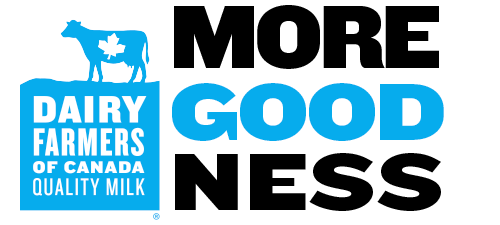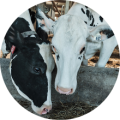
Dairy Queens: Cow Comfort on Canadian Dairy Farms
Cows are the farmers’ dairy queens, so they make sure the bovines are always comfortable and well cared for. From barns and bedding to brushes and hoof care, discover the many ways Canadian dairy farmers give their cows the royal treatment.
It starts in the barn
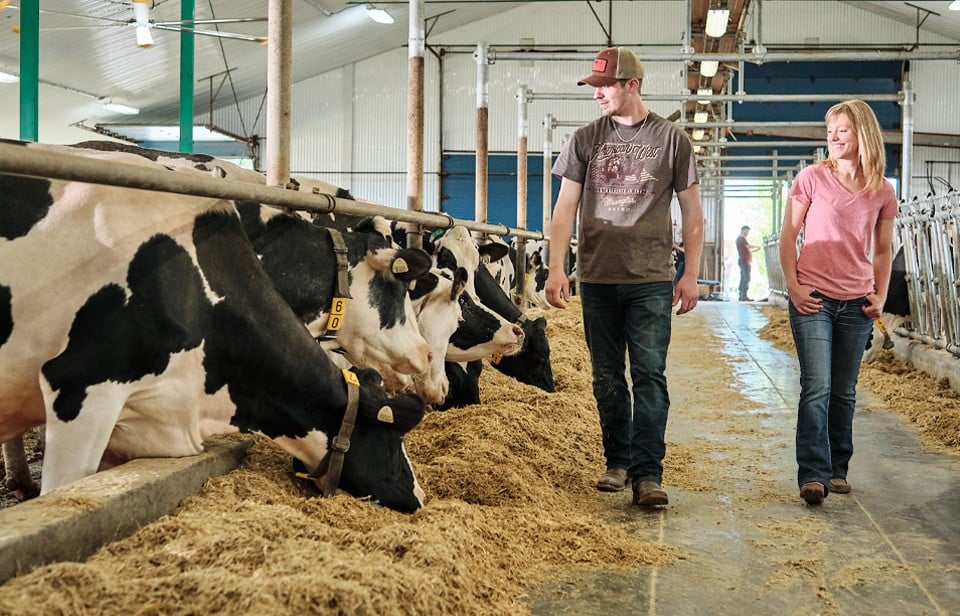
Barn Comfort
Cow comfort starts in the barn, where the animals spend most of their time. It's also where they access food and water, socialize with herd mates, and sleep and rest.
Barn Design
All barns must be designed to provide enough space to animals for comfort and health, while also maintaining a level of ease for farmers to provide proper care1. Barn designs also consider providing proper ventilation and maintaining a comfortable range of humidity levels. Other measures include ensuring the flooring has good traction to prevent slips and falls.
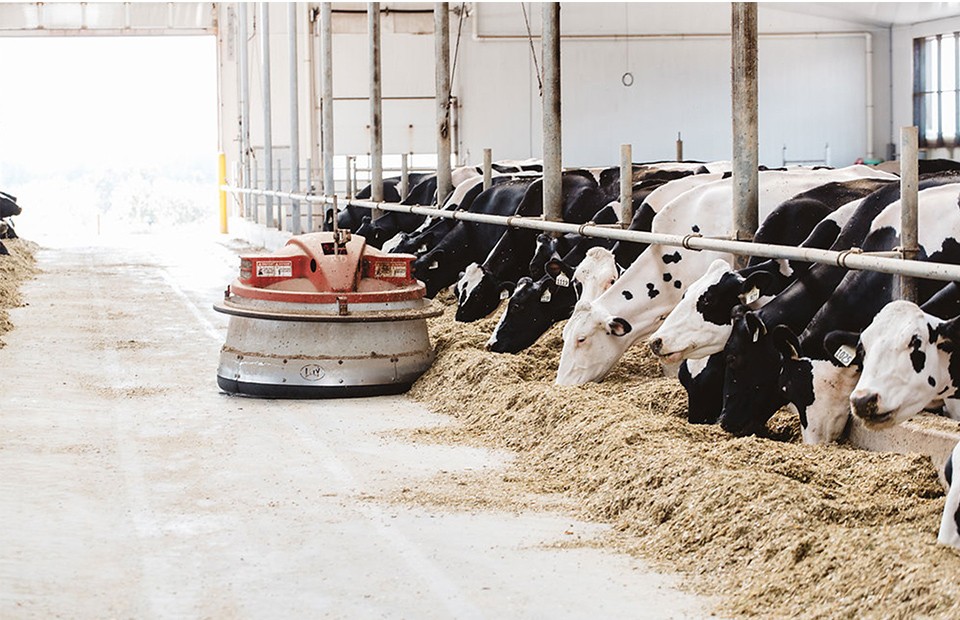
Bedding
Cows rest on fresh bedding (usually straw, sand, wood shavings or other locally available suitable material). Stalls are cleaned at least once a day, every day. Bedded stalls must offer a soft surface for animals to rest and relax, as well as the necessary space for a cow to enjoy natural and comfortable postures. Some farms also have a rubber mat or waterbed underneath their bedding.
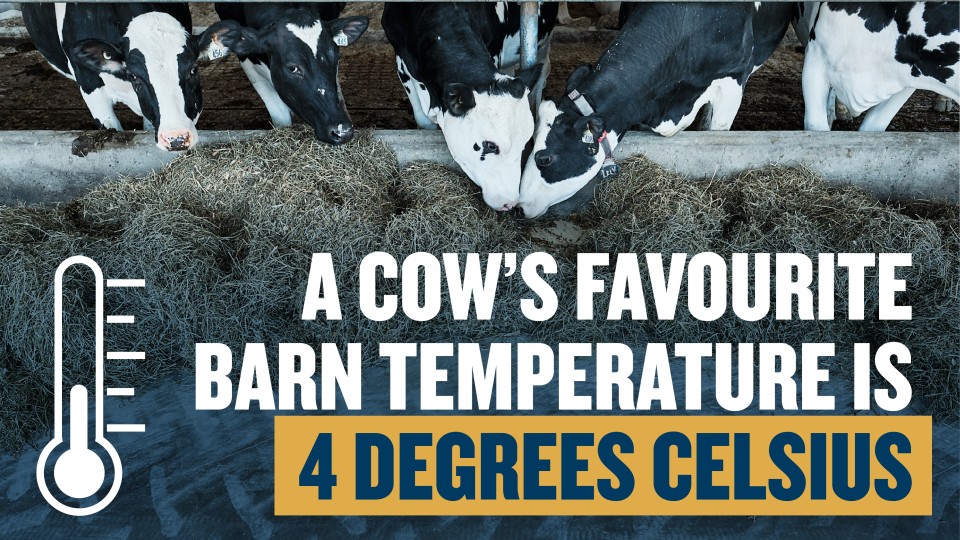
Shelter and warmth
Barns provide shelter from the outdoor elements. Even in a Canadian winter, cows stay warm with their own body heat and ample bedding. While we humans may prefer 20º Celsius, research shows that cows seem to love 4 degrees Celsius!
The interior of a dairy barn is rarely below 0, because if the drinking water, milking systems, and other equipment were to freeze, it would be cold hard work to fix. Some barns also feature curtains to block the wind in colder months (and in warmer months, these can be opened to allow cool breezes). Some farms also offer misting stations to keep cows cool in summer, in addition to all the drinking water they need.
Stall types
Dairy barns feature different types of stalls or resting areas, depending on the type of milking technology used. The three principal barn types are free-stall, tie-stall, and bedded packs.
In free-stall barns, cows move between different sections of the barn for milking, lying, drinking, and eating. Cows are either brought to a milking parlour for milking, or have access to a self-serve robotic milking stall.
In a tie-stall barn, each cow has her own stall, with bedding and free access to food and water in her individual manger. In this setting, it’s the farmer who moves between cows to milk them.
Though less common, some farms have bedded pack barns with no stalls at all. Instead, these barns feature a large, deeply bedded, open pen for cows to roam and rest on. Cows can access the areas for feeding, drinking, and are milked either in a parlour or robotic milking centre, as in free-stall barns.
Regardless of barn type, dairy cows are provided with space to stand, stretch, and adopt natural and comfortable postures.
Cow Care
Between milking, stall cleaning, and other duties, every cow on every Canadian dairy farm is observed every day. Cows are cared for by teams of experts, including veterinarians and cow nutrition experts.
Dairy is also becoming high-tech: cow health trackers or pedometers, milking systems collecting data from individual cows’ milk, and milk testing are all ways to monitor the health of each cow in the herd. Accurate and detailed health records are kept, and health protocols are implemented. Data integration is also possible on modern farms.
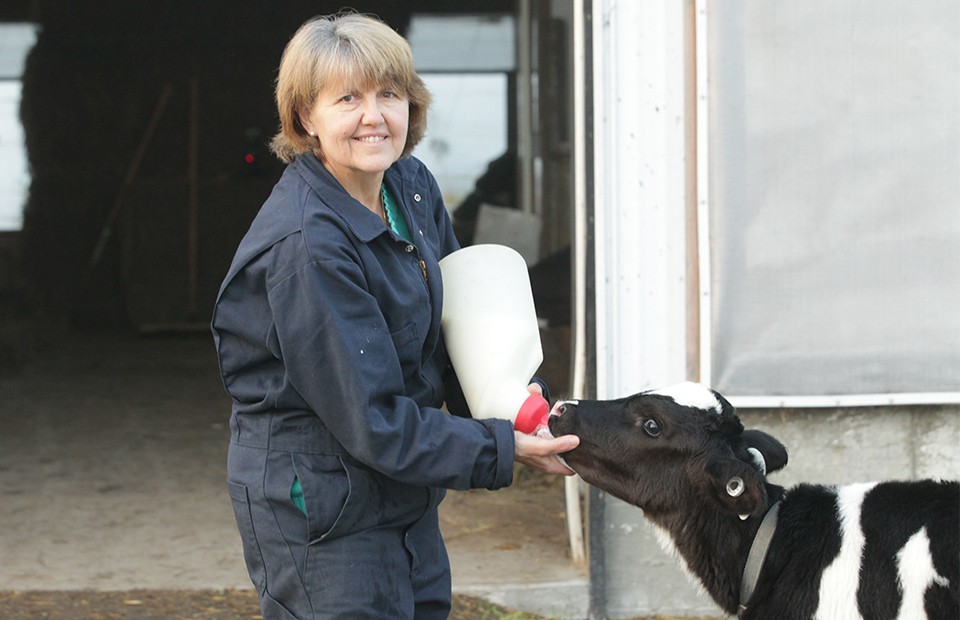
Calf Care
Caring for calves is a crucial aspect of dairy farming – after all, they're the future of the herd! Newborn calves need extra care and attention. Farmers ensure newborn calves receive their colostrum, which contains essential antibodies and nutrients, shortly after birth to help boost their immunity. Calves are typically then bottle-fed, and housed either in hutches or in small groups in a calf barn. These types of calf housing provide a clean, disease-free environment that allows for the calves' immune systems to strengthen. As the calves mature, their growth and health are closely and continually monitored.
Hoof trimming
A cow "pedicure" sounds fancy, but hoof trimming (minus the polish) is actually a routine and essential part of maintaining a cow's health. It goes a long way towards preventing mobility issues, which would require treatment from a veterinarian. A cow's hooves grow about 2 inches per year, so cows typically get a hoof trimming once or twice per year.
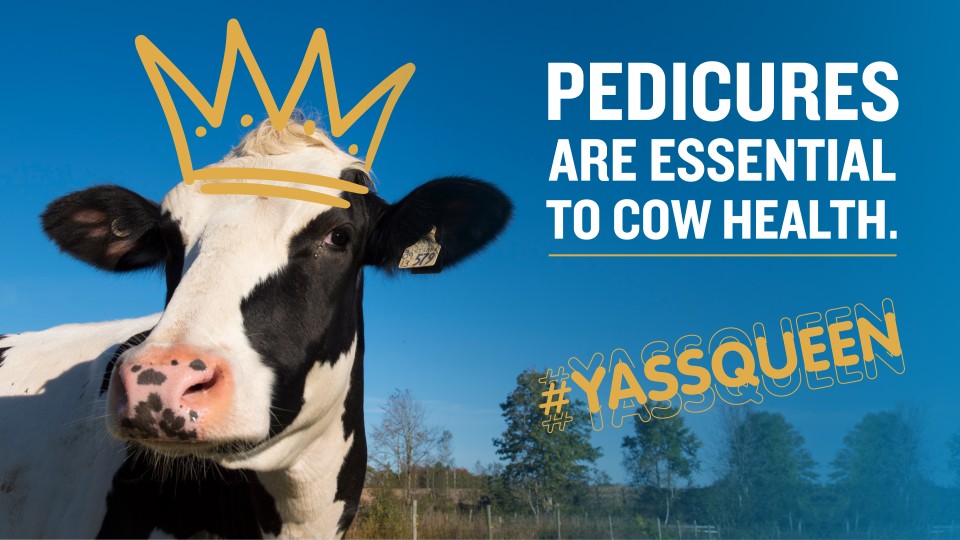
Brushing
Cows on many Canadian dairy farms have access to self-serve brushes like the one pictured below. These brushes (or scratchers) help cows get at bothersome itches (hey, it happens to all of us!). Brushes also help stimulate blood circulation, which promotes coat health.2
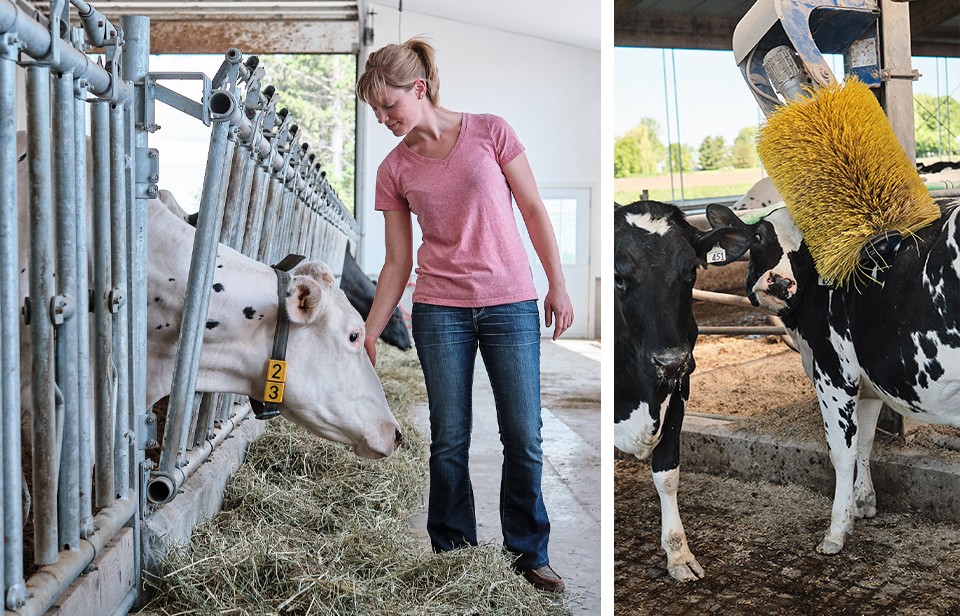
Gentle voices & music
Farmers know that their own attitudes and actions have a direct impact on their cows' behaviour and comfort, so they take measures to ensure that human-animal interactions are positive. Some farmers also say that cows respond well to music (turns out they’re into slow jams, although some researchers say a cow’s personality could influence whether they dig it.3
It all adds up
Canadian dairy farmers go to great lengths to ensure their cows feel comfortable. After all, a cow’s wellbeing is key to her health and productivity. In order words, well-cared for and healthy cows produce more and better milk – a win-win that we can all feel good about.
Sources
- National Farm Animal Care Council. 2023. The Code of Practice for the Care and Handling of Dairy Cattle https://www.nfacc.ca/codes-of-practice/dairy-cattle/code.
- Robivec Agrisolutions, Cow Brush, https://rovibecagrisolutions.com/en/produit/cow-brush. Accessed September 15, 2024.
- Uetake K et al. Effect of music on voluntary approach of dairy cows to an automatic milking system. Applied Animal Behaviour Science 1997; https://doi.org/10.1016/S0168-1591(96)01159-8




